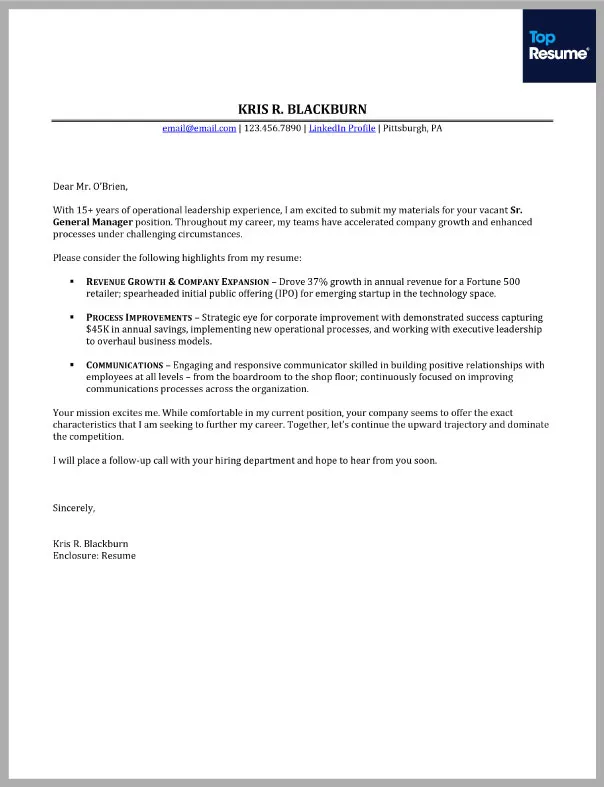What is a Cover Letter Resume and Why Do You Need It
A cover letter resume is a crucial document that accompanies your resume when applying for a job. It’s your first opportunity to make a strong impression on a potential employer. Think of it as a personalized introduction, providing context to your resume and highlighting why you are the perfect fit for the role. Unlike a resume, which provides a factual overview of your skills and experience, a cover letter allows you to tell your story, express your enthusiasm, and demonstrate your understanding of the company and the specific job requirements. A well-crafted cover letter can significantly increase your chances of getting your resume noticed and securing an interview.
In today’s competitive job market, a cover letter is often essential. It demonstrates your attention to detail, communication skills, and genuine interest in the position. Many employers use cover letters to quickly assess a candidate’s suitability before diving into their resume. Therefore, taking the time to craft a compelling cover letter is an investment that can pay off handsomely in your job search.
The Key Components of a Winning Cover Letter Resume
A successful cover letter resume should be well-structured, concise, and tailored to the specific job you’re applying for. It should include the essential elements listed below, each contributing to the overall effectiveness of your application. The order of these elements is important, guiding the reader through your key qualifications and expressing your interest.
Contact Information
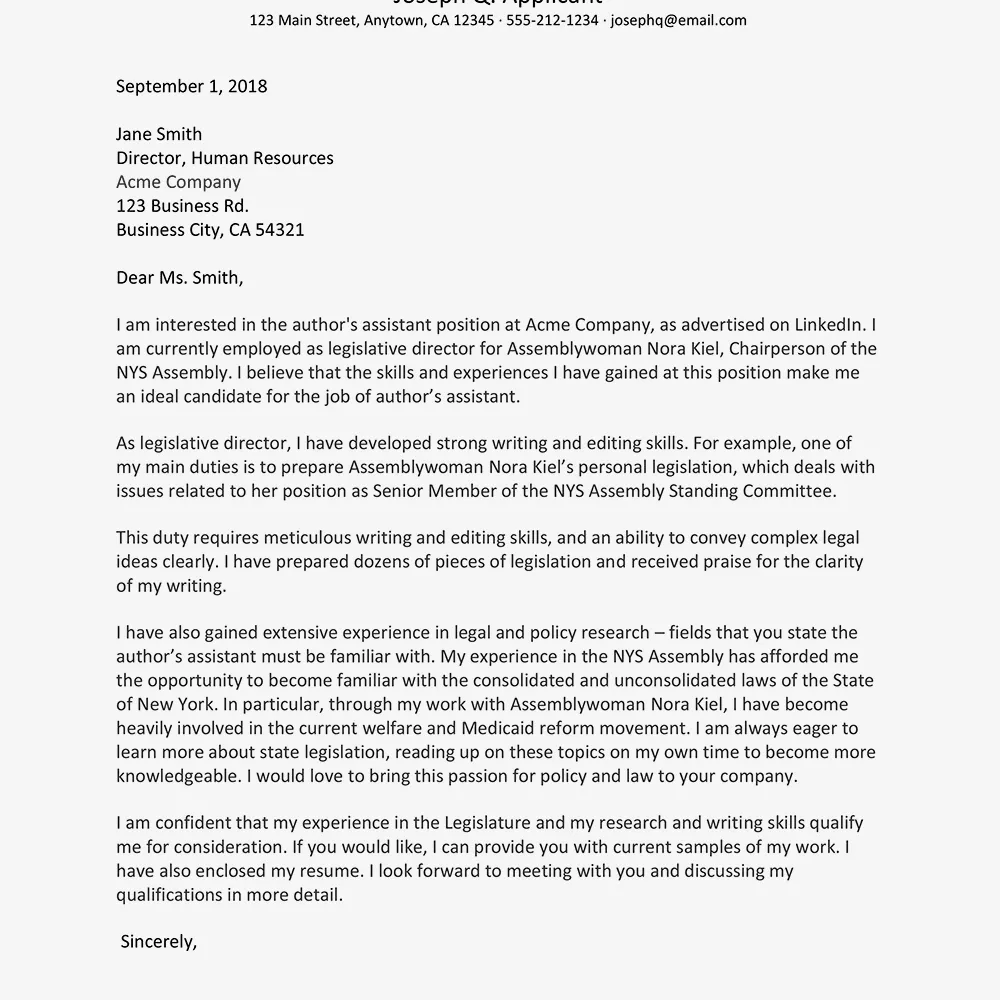
Start your cover letter with your contact information. Include your full name, phone number, email address, and optionally, your LinkedIn profile URL. This information should be prominently displayed at the top of the letter, making it easy for the hiring manager to contact you. Ensure your email address is professional-sounding, as this is a reflection of your attention to detail.
Professional Greeting
Address the hiring manager or the specific person listed in the job posting whenever possible. If you can’t find a name, use a professional greeting like ‘Dear Hiring Manager’. Avoid generic greetings like ‘To Whom It May Concern’, as this can make your letter seem impersonal. Research the company and the hiring team to personalize your greeting, showing that you’ve taken the time to learn about them.
Introduction Highlight Your Enthusiasm
Your introduction should immediately grab the reader’s attention. State the position you’re applying for and briefly explain how you learned about the opportunity. Express your enthusiasm for the role and the company, demonstrating your genuine interest. Briefly mention your most relevant qualification to hook the reader and encourage them to read further. Keep the introduction concise and impactful, setting the tone for the rest of your letter.
For example, you might start with something like ‘I am writing to express my keen interest in the Marketing Manager position at [Company Name], as advertised on [Platform]. With five years of experience in developing and implementing successful marketing strategies, I am confident I can significantly contribute to your team’s objectives.’
Body Paragraphs Showcase Your Skills
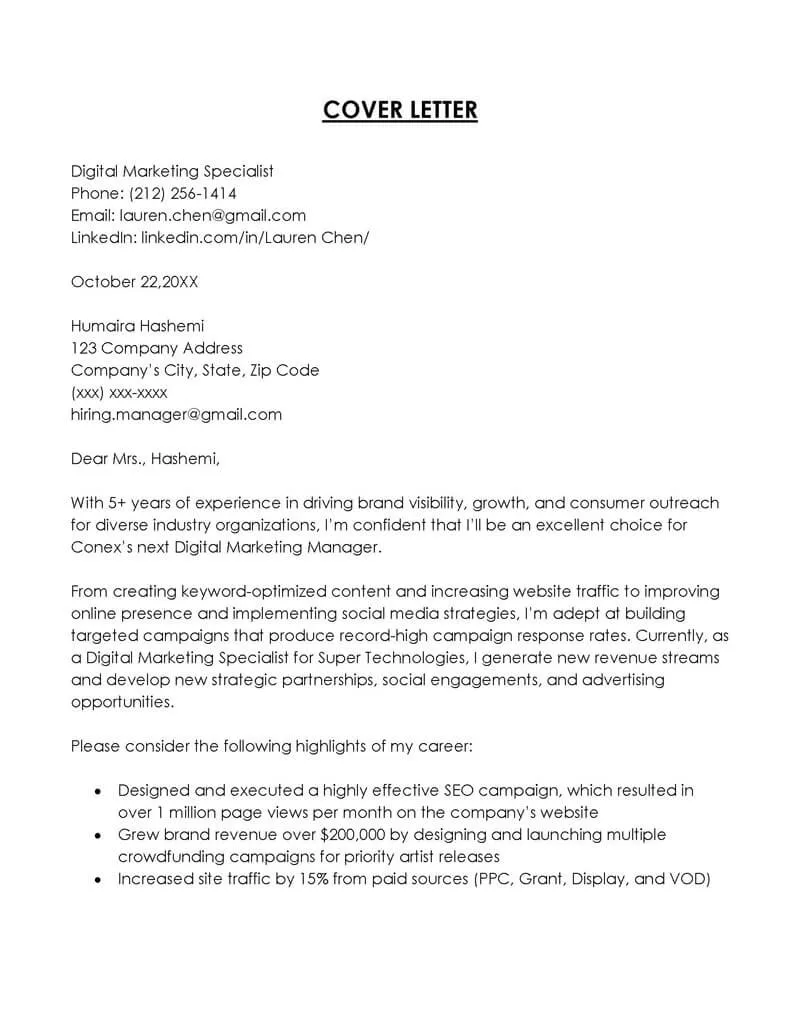
The body of your cover letter is where you demonstrate how your skills and experiences align with the job requirements. Provide specific examples of your accomplishments and quantify your achievements whenever possible. Focus on the skills and qualifications the employer is seeking. Avoid simply restating your resume; instead, elaborate on your key accomplishments, demonstrating your ability to add value.
Highlight Your Achievements
Focus on your achievements, rather than just listing your responsibilities. Use the STAR method (Situation, Task, Action, Result) to structure your examples, providing context, explaining your role, detailing your actions, and highlighting the positive outcomes you achieved. This approach makes your accomplishments more tangible and demonstrates your impact.
Use Action Verbs
Start your sentences with strong action verbs to showcase your skills and accomplishments. Words like ‘managed’, ’led’, ‘developed’, ‘implemented’, ‘achieved’, ‘increased’, and ‘improved’ help to create a dynamic and engaging narrative. Action verbs bring your experiences to life and illustrate your ability to make a difference.
Address the Employer’s Needs
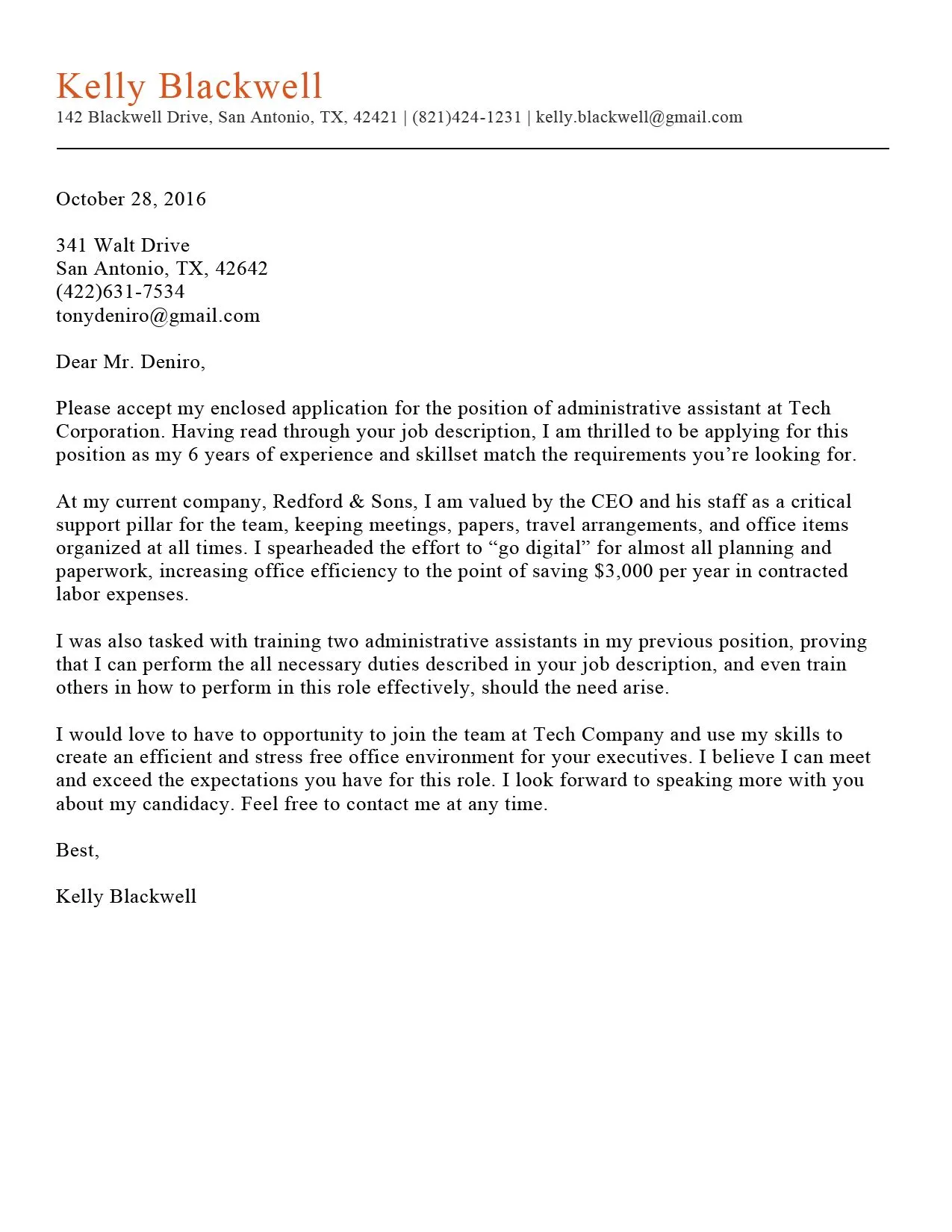
Show that you understand the company’s needs and how you can contribute to their success. Research the company’s mission, values, and recent projects. Explain how your skills and experiences can help them achieve their goals. Demonstrate your understanding of the role and how your background aligns with the requirements.
Tailor Your Cover Letter
Always tailor your cover letter to the specific job and company. Don’t use a generic cover letter; customize it for each application. Review the job description carefully and highlight the skills and experiences that are most relevant. Mention specific projects or initiatives that align with the company’s work. This personalization shows that you’ve done your research and that you are genuinely interested in the opportunity.
Closing Your Cover Letter Resume
Your closing should summarize your interest in the position and reiterate your qualifications. Express your gratitude to the reader for considering your application and include a clear call to action. This section is your final opportunity to leave a lasting impression.
Express Gratitude

Thank the hiring manager for their time and consideration. A simple expression of gratitude shows professionalism and respect. This is also a good opportunity to reinforce your enthusiasm for the position and the company.
Call to Action
End with a call to action, such as stating your availability for an interview. Make it easy for the hiring manager to move forward with your application. This proactive approach demonstrates your enthusiasm and initiative.
Proofreading and Formatting for Success
Before submitting your cover letter, proofread it carefully for any grammatical errors, typos, or inconsistencies. Ensure your formatting is clean and professional, with clear headings, concise paragraphs, and a consistent font. A polished cover letter demonstrates your attention to detail and commitment to excellence.
Common Mistakes to Avoid
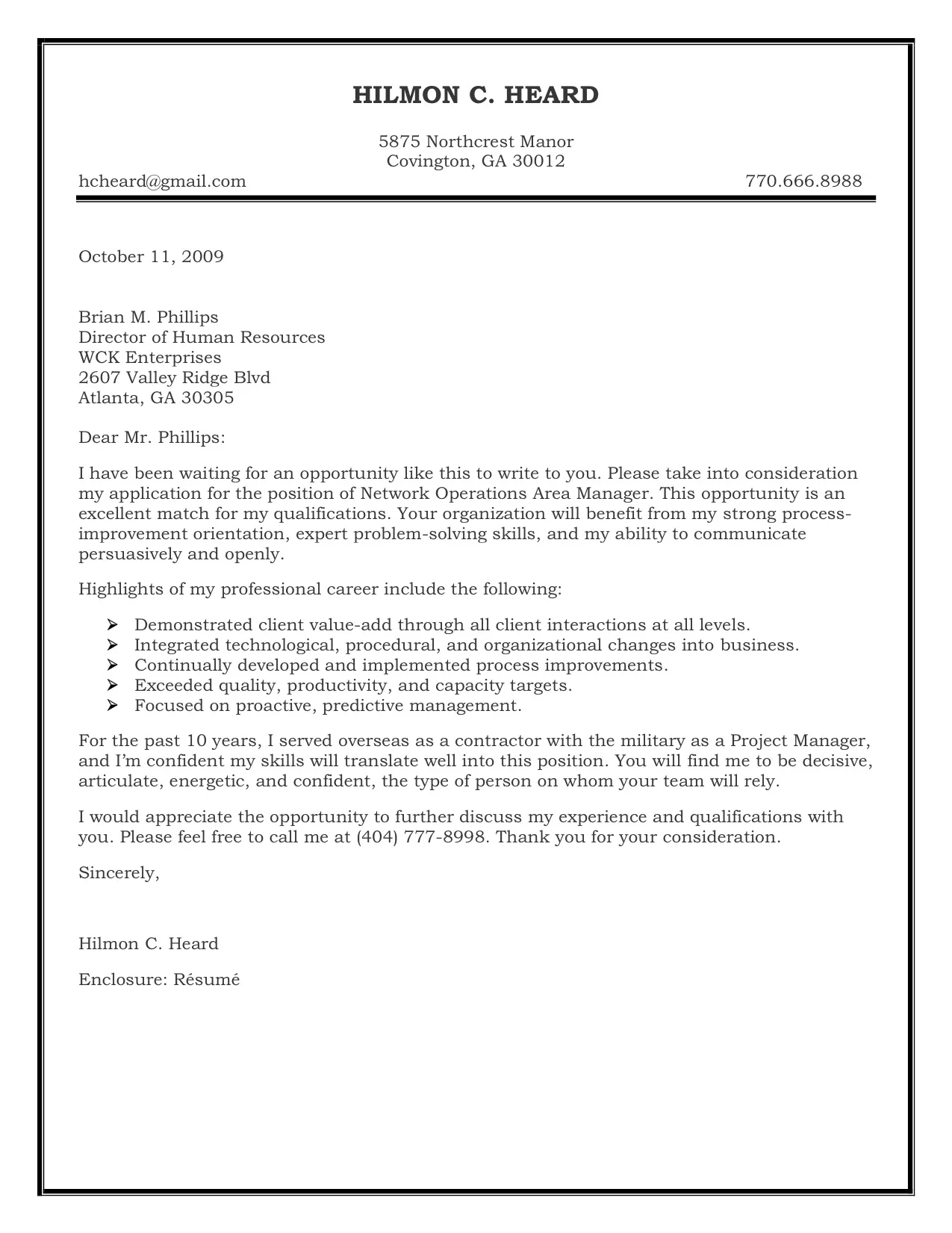
Avoid these common mistakes to increase the effectiveness of your cover letter resume. These pitfalls can undermine your application and decrease your chances of getting an interview.
- Using generic templates
- Failing to tailor your letter to the specific job
- Making grammatical errors or typos
- Including irrelevant information
- Being too lengthy
- Repeating information from your resume
- Using a negative tone
By avoiding these common pitfalls, you’ll significantly enhance the impact of your cover letter and increase your chances of securing an interview.
In conclusion, crafting a compelling cover letter resume is a crucial step in any job search. By following these guidelines, you can create a cover letter that captures the attention of employers, highlights your skills and experience, and ultimately helps you land your dream job. Remember to tailor each letter to the specific job and company, proofread carefully, and let your enthusiasm shine through. Good luck with your job search!
